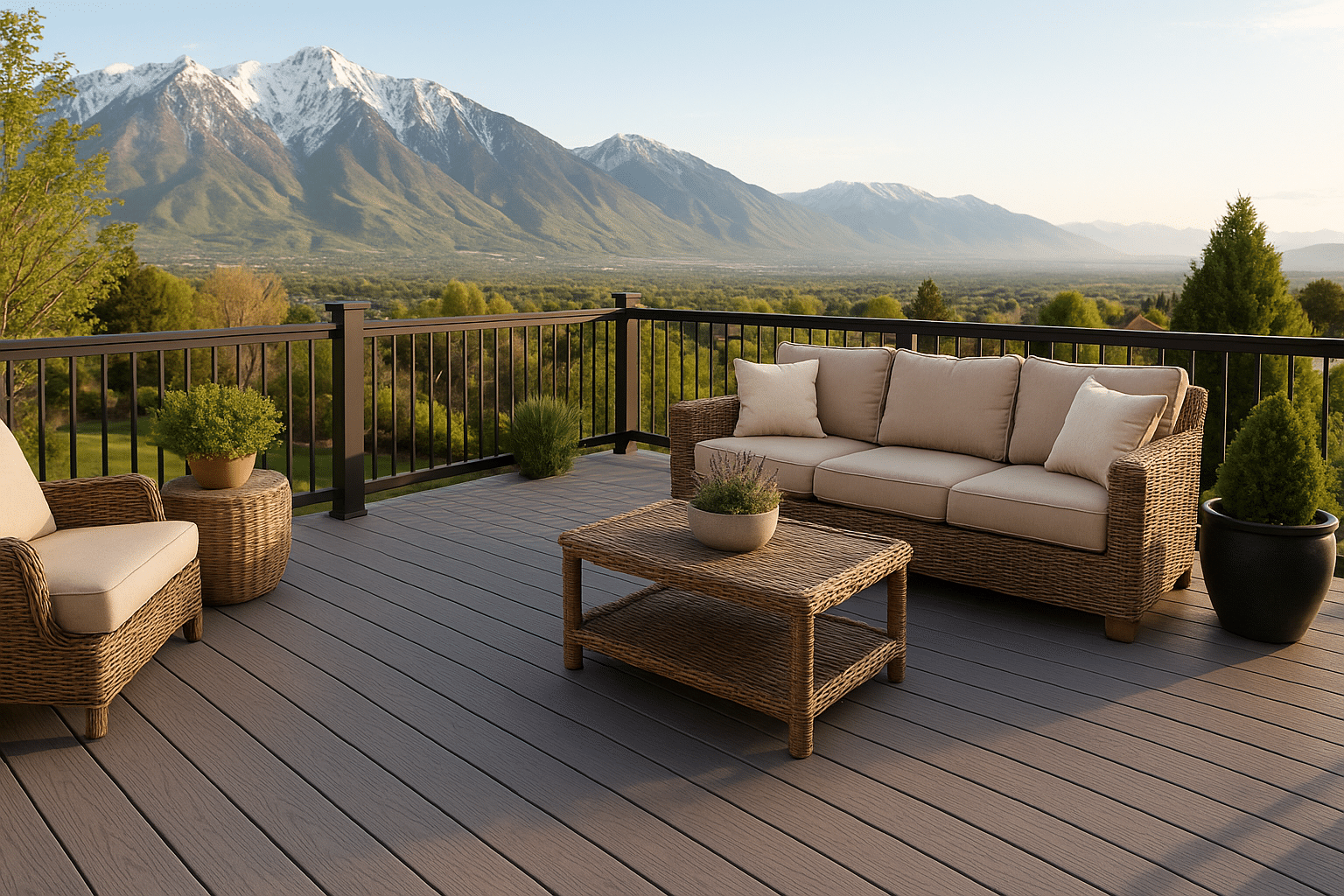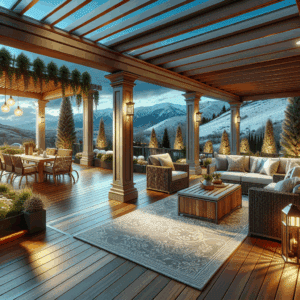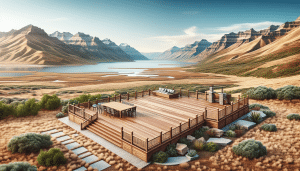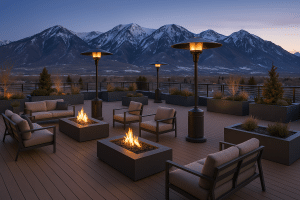Choosing the right decking material can feel overwhelming when you want a beautiful, low maintenance outdoor space that lasts for years. This guide breaks down composite decking so you can make a confident choice without the guesswork. It is written for homeowners and contractors who want practical, local guidance on Materials, performance, and installation to get the most from their investment.
Why Composite Decking Is Worth Considering
Composite decking combines wood fibers and recycled plastics to create boards that resist rot, splitting, and insect damage. We recommend it because it reduces long term upkeep compared with natural wood while delivering consistent performance under a variety of weather conditions.
Homeowners appreciate the predictable color and texture options, and contractors like the uniformity when planning projects. In our experience, composite offers a strong balance between durability and aesthetics that appeals to busy families and professionals alike.
Understanding Composite Decking Construction
Manufacturers build composite boards in different ways, usually either capped or uncapped. A capped board has a protective outer layer that enhances stain resistance and color retention while an uncapped board relies on a consistent blend through the whole profile.
Knowing the construction helps you predict maintenance needs and longevity. We always look at the cap composition, core type, and how the board handles moisture before recommending a brand for a specific application.
Comparing Performance and Durability
Performance varies widely between Products, so look for boards with proven warranties and third party testing. Key areas to compare include fade resistance, scratch resistance, and how the material handles freeze thaw cycles and long term UV exposure.
We test samples in real world conditions and consider warranty fine print to understand what manufacturers actually cover. A longer warranty often signals confidence in product durability, but you should also consider local climate stresses when evaluating coverage.
Appearance and Style Options
Composite decking now offers a wide palette of colors and realistic woodgrain textures. You can get everything from classic brown tones to contemporary grays and low gloss finishes that reduce glare in bright sun.
Because composites are manufactured, color consistency is higher from board to board than with natural wood. We guide homeowners to choose palettes that complement home exteriors and landscaping while also considering how color will look in sun and Shade throughout the day.
Installation Basics and Best Practices
Proper installation is crucial to get the full life and performance that composite decking promises. We stress correct Joist spacing, ventilation, and fastening methods to avoid problems like sagging or trapping moisture under the deck.
Contractors and DIYers should follow the manufacturer installation guide for fastener type, hidden clip spacing, and end gap allowances. When we install, we plan for proper drainage and airflow to protect the deck substructure for decades of use.
Substructure and Support Considerations
Composite boards transfer loads differently than wood, so the joist system and ledger must be sized and attached correctly. We evaluate joist spacing and connection details early in a project to prevent costly adjustments during installation.
Choosing rot resistant framing materials and applying appropriate flashing around the ledger are essential steps. We recommend materials that minimize long term maintenance and provide a stable base for composite boards to perform as intended.
Maintenance: What to Expect and How to Care for It
One of the main attractions of composite decking is reduced maintenance. You will still want to clean periodically to remove debris, prevent staining, and restore visual appeal, but no sanding or annual sealing is required.
We suggest seasonal rinsing and occasional mild cleaning with manufacturer approved products. When spills occur, address them promptly and follow cleaning guidance to protect the cap layer and preserve warranty coverage.
Cost, Value, and Life Cycle Considerations
Composite decking carries a higher upfront cost than Pressure Treated wood but can deliver savings over time through lower maintenance, longer life, and higher resale appeal. We help homeowners compare first cost and total cost of ownership to find the best match for budget and goals.
When evaluating value, consider warranty length, expected longevity, and appearance retention. We analyze typical lifecycle expenses so you can weigh short term savings against long term benefits and make the most cost effective choice for your home.
Environmental Impact and Sustainability
Many composite boards use recycled plastics and reclaimed wood fibers, which reduce pressure on natural forests and divert waste from landfills. We look for certifications and manufacturer transparency to confirm recycled content and responsible sourcing.
Environmental performance also depends on manufacturing energy use and the potential for recycling at end of life. We discuss options with homeowners who want to make greener choices and identify products that balance sustainability with durability.
Choosing a Contractor and Project Planning
Selecting the right contractor influences the final appearance, Structural integrity, and longevity of the deck. We recommend interviewing multiple contractors, checking references, and confirming experience with the composite brand you plan to use.
- Experience Verify years of work installing the specific composite product and ask for recent project photos so you can see finished results.
- Licensing Confirm the contractor holds the necessary licenses and insurance to protect you during construction and in case of accidents.
- Warranty Ask how installation practices affect your manufacturer warranty and whether the contractor provides a workmanship warranty.
- Local Reviews Check local reviews and get referrals from neighbors so you can assess reliability and communication on similar projects.
- Price Transparency Choose contractors who provide detailed written estimates that itemize materials, labor, and contingencies so there are no surprises.
We find that clear communication and a written plan prevent most issues. Before work begins, confirm schedule, staging areas, and how the crew will protect landscaping and existing structures.
Design Tips to Maximize Use and Comfort
Think about traffic patterns, shade, and furniture placement when planning deck layout. We often recommend a combination of open areas for dining and cozy sections for seating to create defined spaces that flow naturally from the house.
Include built in seating, lighting, and Railing that complement the decking material to increase usable space without crowding. We also advise considering slip resistant textures and strategically placed shade to extend the season of comfortable outdoor use.
Color Selection and Long Term Appearance
Color choice affects how heat and fading show over time. Darker tones can absorb more heat on hot days while lighter tones reflect more light and show less heat retention during summer use.
We recommend ordering sample boards to view in your yard at different times of day before you choose. Samples help you evaluate grain patterns, color variation, and how the boards interact with your home exterior and landscaping.
Working with Deck Accessories and Rail Systems
Railings, lighting, and trim finishes round out the deck experience and must be compatible with your chosen decking system. We coordinate profiles and fastener systems to ensure a cohesive look and secure assembly.
For a premium finish, select railing materials that match or enhance decking color and texture and choose lighting that improves safety while highlighting design features. We help plan accessory placement so installation is seamless and durable.
Common Mistakes to Avoid
Avoid shortcuts such as undersized joists, poor ventilation, and improper fastener selection. These issues can shorten the life of the deck and void manufacturer warranties, increasing your long term costs.
We also see owners underestimate drainage needs under the deck and neglect early stain removal. We coach clients on preventive steps and schedule checks that keep small issues from becoming costly repairs.
Warranty, Documentation, and Aftercare
Carefully read warranty terms and keep installation documents, receipts, and any maintenance records. We provide a project packet that explains what the warranty covers and what homeowner actions are required to maintain validity.
Aftercare often includes periodic inspections, simple cleaning, and addressing any debris accumulation. We schedule a follow up after installation to review care recommendations and answer homeowner questions to ensure long term satisfaction.
Case Studies and Real World Examples
We showcase completed projects to illustrate choices and outcomes for different budgets and styles. Seeing examples helps homeowners visualize how materials perform in similar sunlight exposure and use patterns.
Our case studies highlight what worked well and lessons learned so you can make informed decisions. We encourage clients to visit recent projects when possible and talk with neighbors who have similar installations.
How to Budget and Schedule Your Deck Project
Start by defining priorities such as size, features, and finish level to develop a realistic budget. We help homeowners break down costs into material, labor, permits, and add ons so the Estimate matches expectations.
Project timing depends on contractor availability, material lead times, and local permitting. We advise planning a few months ahead for peak seasons and allow for weather variability to keep the schedule manageable.
Conclusion and Next Steps
If you’re ready to talk through material options and get personalized recommendations, contact Utah Deck Supply by phone # 385-993-5492.
or Request a Free Quote and we will help plan a durable, beautiful deck that fits your goals and budget.




